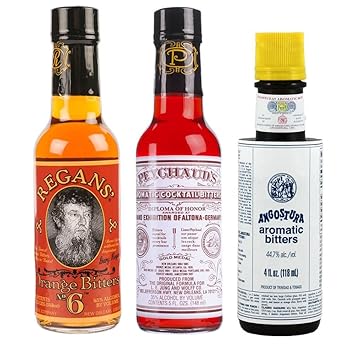
Much like doughnuts and dumplings—and, well, pancakes in general—almost every culture around the world has its own take on potato pancakes. The Swiss have their rosti, the Japanese have their korokke, the Irish have their boxty, and the Ecuadorians have their llapingachos. Whether or not these dishes call for eggs, flour, milk, onion, cheese, or any number of other ingredients, they sure have one thing in common: the main ingredient is potatoes.
Americans are certainly familiar with potato pancakes, and, depending on location, may also know them as latkes. So, what’s the difference between potato latkes and potato pancakes? Well, it all starts with the history of the humble spud and its evolution into beloved crispy-on-the-outside, fluffy-on-the-inside pancake form.
Potatoes: More Worldly Than You May Think
While you may associate them with another country (Ireland, I’m looking at you), historians and anthropologists agree that potatoes originated in South America. More specifically, in Peru, where they’ve been cultivated for thousands and thousands of years. From there, they spread throughout Latin America and, thanks to the Columbian Exchange, to Europe and other parts of the globe. As a result, gamja-jeon is eaten in South Korea, aloo tikki is eaten in India, and raggmunkar is eaten in Sweden.
Potato croquettes, which—I know, I know, aren’t pancakes—could be considered a close cousin. Like potato pancakes, they may also be either stuffed or topped with regional ingredients. Yet, strangely, recipes for either seem to date back only to the 19th century. However, this may be more of an issue with record-keeping than anything else.
The Difference Between Potato Pancakes and Latkes
At its most basic, a potato pancake is made with potato, raw or cooked, shredded or mashed, that is then shaped into a round and flattened disc and either fried or baked until it’s golden brown in color, crunchy on the outside, and tender on the inside. These days, most people think of latkes as potato pancakes that are traditionally made to celebrate the Jewish holiday of Hanukkah. However, the word latke, which is Yiddish by way of Russian and/or Ukrainian and loosely translates to “little oily thing,” hints at its history.
To begin with, latkes weren’t originally made with potatoes. Instead, they were often made with what Jews in various parts of the world had available. This includes other root vegetables, such as turnips and carrots, and even flour, such as buckwheat. And although they’re supposed to be made with olive oil, since it wasn’t always available or affordable, latkes were often fried in other types of oil, including animal fat. However, once potatoes became a staple in Europe in the 19th century, especially the eastern region, where many Ashkenazi Jews who immigrated to the U.S. originally came from, they became the main ingredient in latkes. As a result, most Americans associate latkes with potatoes.
However, in recent years, more and more cooks have published recipes with creative takes on latkes. Here are a few of our favorites.
Spring Chef 4-Sided Stainless Steel Box Grater, $11.97 on Amazon
Grating your potatoes by hand ensures you don't end up with heavy, leaden latkes. Just watch your knuckles!
Potato Latkes

Chowhound
There’s nothing wrong with sticking to basics, especially if you’ve never tried making latkes before. This version is made with matzo meal, which helps to hold the pancakes together while cooking and adds a slightly toasty flavor. Traditional toppings include sour cream or applesauce, but there are plenty of creative ways to top a latke. Get our Potato Latkes recipe.
Potato-Turnip Latkes Fried in Duck Fat

Chowhound
This nod to latkes of the past puts turnips in the mix, which lends some sweetness and earthy depth. Frying the cakes up in duck fat adds another layer of flavor and richness. The recipe also suggests topping the finished product off with duck confit for a real treat. Get our Potato-Turnip Latkes Fried in Duck Fat recipe.
Sweet Potato Latkes

Chowhound
Ah, the sweet potato latke; once you’ve tried it, you’ll wonder why it took you so long to jump on this bandwagon. When fried, sweet potato practically melts in your mouth, like a caramelized dream. It’s the perfect replacement for regular potatoes. Get our Sweet Potato Latkes recipe.
Celery Root Latkes with Pastrami

Chowhound
Yet another nod to latkes of the past, this recipe features celeriac, also known as celery root, and is topped with pastrami and pickles. If only every Jewish deli had this on the menu. To make it at home, get our Celery Root Latkes with Pastrami recipe.
Boxty (Irish Potato Pancake)

Chowhound
Simple yet satisfying, boxty calls for a combination of mashed and grated potato to create a unique texture for frying. And just like latkes, these babies can be topped with so many things: sour cream and caviar, crème fraîche and smoked salmon, eggs and sausage, chutney, jam, or syrup. Get our Boxty (Irish Potato Pancake) recipe.
Cheesy Skillet Potato Cake

Chowhound
Potatoes and cheese are made to go together! This recipe would be great for a family breakfast or brunch with friends. Serve it with a side of eggs, bacon, sausage, or even on its own as the main dish. Get our Cheesy Skillet Potato Cake recipe.
Llapingachos

Panning the Globe
These Ecuadorian potato and cheese patties are great with a fresh tomato and avocado salad. Get the Llapingachos recipe.
Related Video: How to Make Latkes with Leslie Jonath
All featured products are curated independently by our editors. When you buy something through our retail links, we may receive a commission. For more great hand-picked products, check out the Chowhound Shop.
from Food News – Chowhound https://ift.tt/2Tq0BPr
via IFTTT










































